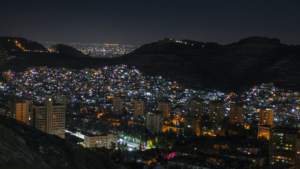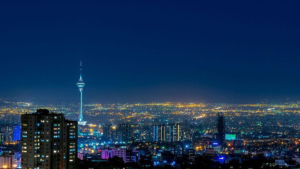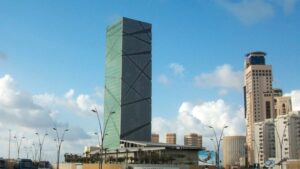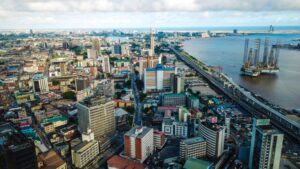
World’s 10 cheapest cities To live in 2024
1. Damascus,sayria:
With a relatively low cost of living Damascus offers affordable essentials and services, allowing residents and services, allowing residents to enjoy the city’s historical charm without starining their budgets.
The city exhibits outstanding evidence of the civilizations which created it – Hellenistic, Roman, Byzantine and Islamic. In particular, the Umayyad caliphate created Damascus as its capital, setting the scene for the city’s ongoing development as a living Muslim, Arab city, upon which each succeeding dynasty has left and continues to leave its mark.
In spite of Islam’s prevailing influence, traces of earlier cultures particularly the Roman and Byzantine continue to be seen in the city. Thus the city today is based on a Roman plan and maintains the aspect and the orientation of the Greek city, in that all its streets are oriented north-south or east-west and is a key example of urban planning.

2.Tehran, Iran:
Tehran’s economical living condition make it one of the least expensive cities,where affordable markets, inexpensive public transportation, and budget-friendly dining options contribute to a resonable lifestyle for residents.
Tehran, the capital of Iran, is a bustling metropolis known for its rich history, culture, and architecture. It’s situated at the foothills of the Alborz mountain range and is a significant hub for politics, education, and the arts in Iran.
The city has a blend of modernity and tradition, with landmarks like the Golestan Palace, a UNESCO World Heritage Site, showcasing exquisite Persian architecture. Tehran also boasts numerous museums, including the National Museum of Iran, which houses a vast collection of artifacts reflecting the country’s ancient history.
The city’s vibrant bazaars, such as the Grand Bazaar, offer a glimpse into daily life and are perfect for experiencing traditional Iranian culture, shopping for handicrafts, spices, and enjoying local cuisine.
Tehran is also known for its parks and green spaces, providing residents and visitors with places to relax and enjoy nature amidst the urban landscape.

3.Tripoli, Libya:
Tripoli stands as a cost-effective city, offering affordable accommodations, basic amenities, and accenssible local markets, providing residents with a relatively affordable standerd of living.
Tripoli, the capital city of Libya, holds a significant place in North Africa. It’s a city rich in history and cultural heritage but has also faced challenges due to political instability and conflict in recent years.
Historically, Tripoli boasts ancient roots dating back to Phoenician times. The city has a blend of architectural styles, from Roman ruins like the Arch of Marcus Aurelius to the Ottoman-style mosques and Italian colonial buildings from the period of Italian rule in the early 20th century.
The city’s old town, the Medina, is a labyrinth of narrow streets filled with markets, mosques, and historic buildings, providing a glimpse into its past. The Red Castle Museum, located within the ancient citadel, showcases Libya’s history through its exhibits.
Tripoli’s Martyrs’ Square, formerly known as Green Square, has been a focal point for gatherings and events, reflecting the city’s political and social significance.
However, it’s important to note that due to the political unrest and security concerns in Libya, travel to Tripoli or other parts of the country might not be advisable without thorough research and consideration of the current situation and travel advisories.

4.Karachi, pakistan:
known for its affordability, karachi boasts a low cost of living with reasonably priced housing, inexpensive street food, and a range of budget-friendly activites that cater to residents seeking a wallet-friendly lifestyle.
Karachi, the largest city in Pakistan, is a vibrant and bustling metropolis known for its diverse culture, economic significance, and historical landmarks.
Situated on the Arabian Sea, Karachi has a rich history that includes influences from various cultures, including the Mughals, British colonial rule, and its prominence in the independence movement of Pakistan.
The city’s skyline is a mix of modern skyscrapers and historic buildings. The Mazar-e-Quaid, the mausoleum of Muhammad Ali Jinnah (the founder of Pakistan), is a significant landmark. Clifton Beach and the Karachi Port are also popular spots for locals and tourists alike.
Karachi is a melting pot of cultures, and this diversity is reflected in its food, festivals, and vibrant arts scene. The city is known for its delicious street food, including Biryani, Nihari, and Kebabs, which are a must-try for visitors.
Additionally, Karachi has a thriving art and music scene, with numerous galleries, theaters, and cultural events taking place throughout the year. The National Museum of Pakistan and Mohatta Palace are among the places that offer insights into the city’s history and art.
However, like many large cities, Karachi also faces challenges such as infrastructure development, security concerns, and social issues.

5, Tashkent, uzbekistan:
Tashkent’s status as a budget-friendly city is evident in its affordable public transportation, reasonably priced groceries, and accessible entertainment options, making it an aconomically viable choice for residents.
Tashkent, the capital city of Uzbekistan, is a vibrant blend of history, culture, and modernity. Situated at the crossroads of the ancient Silk Road, Tashkent has been a significant cultural and economic center in Central Asia for centuries.
The city boasts a mix of Soviet-era architecture, traditional Islamic buildings, and modern structures. After a devastating earthquake in 1966, Tashkent underwent significant reconstruction, resulting in wide boulevards, parks, and large squares.
The Old Town (or “Eski Shahar”) reflects the city’s ancient past, with narrow streets, bazaars, and historical monuments like the Khast-Imam Complex, which houses the world-famous Quran of Caliph Uthman.
Chorsu Bazaar, one of the oldest markets in Central Asia, is a bustling hub where locals and tourists alike can experience the vibrant colors, aromas, and tastes of Uzbekistan, offering everything from spices and textiles to traditional crafts.
Modern Tashkent features impressive sights like Independence Square, with its monumental architecture and the grand Amir Timur Square, paying homage to the great Central Asian conqueror.
The city also offers various museums and cultural institutions, such as the State Museum of History of Uzbekistan and the Museum of Applied Arts, showcasing the country’s rich heritage in art, crafts, and history.
Tashkent has become increasingly accessible to tourists in recent years, with improved infrastructure and a growing tourism industry. Its mix of history, culture, and welcoming atmosphere makes it an intriguing destination for travelers interested in exploring Central Asia.

6. Tunis, Tinisia:
Tunis combines historicla charm with a low cost of living, offering affordable housing,budget-friendly local markets, and reasonable prices for daily necessities, makinng it an attractive option for those seeking affordability.
7. Lusaka, Zambia:
Lusaka’s relatively low living costs make it an affordable city, with cost-effective housing options, accessible local markets, and affordable services contributing to a reasonable lifestyle for its residents.
8. Ahmdabad, India:
Ahmedabad’s status as one of india’n least expensive cities is reflected in its affordable housing. pocket-friendly street food, and reasonably priced commodities, providing residents with a cost-effective urban experience.
9. Lagos, Nigeria:
Despite being a bustling economic hub, Lagos offer a range of affordable living options, from reasonably priced housing to accessible markets, contributing to a relatively economical lifestyle for its residents.
10. Chennai, india:
Chennai’s affordability is evidents in its economical housing option, budget-friendly street food, and reasonably priced daily necessities, making it an attractive city for those seeking a coast-effective urban lifestyle.



